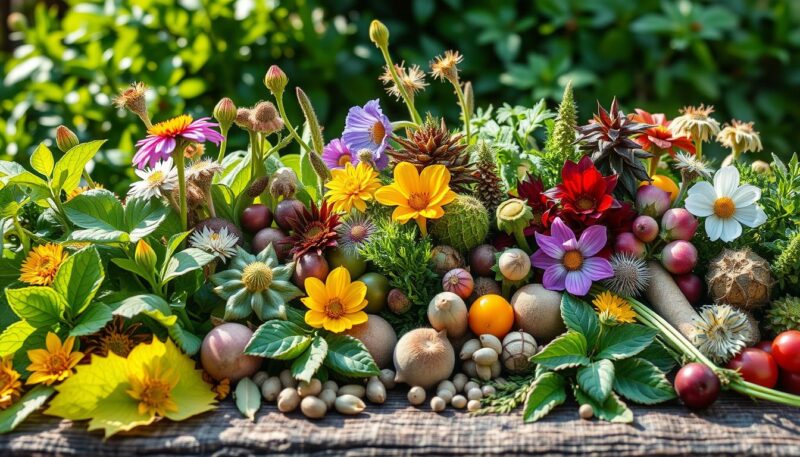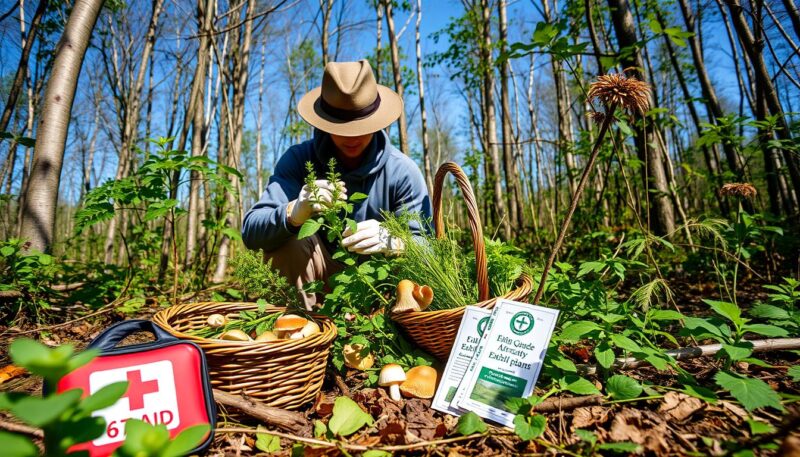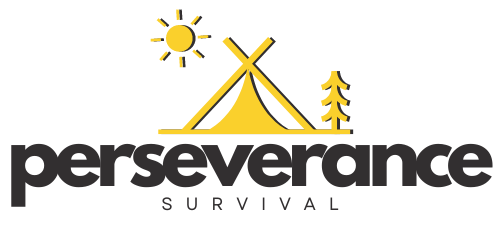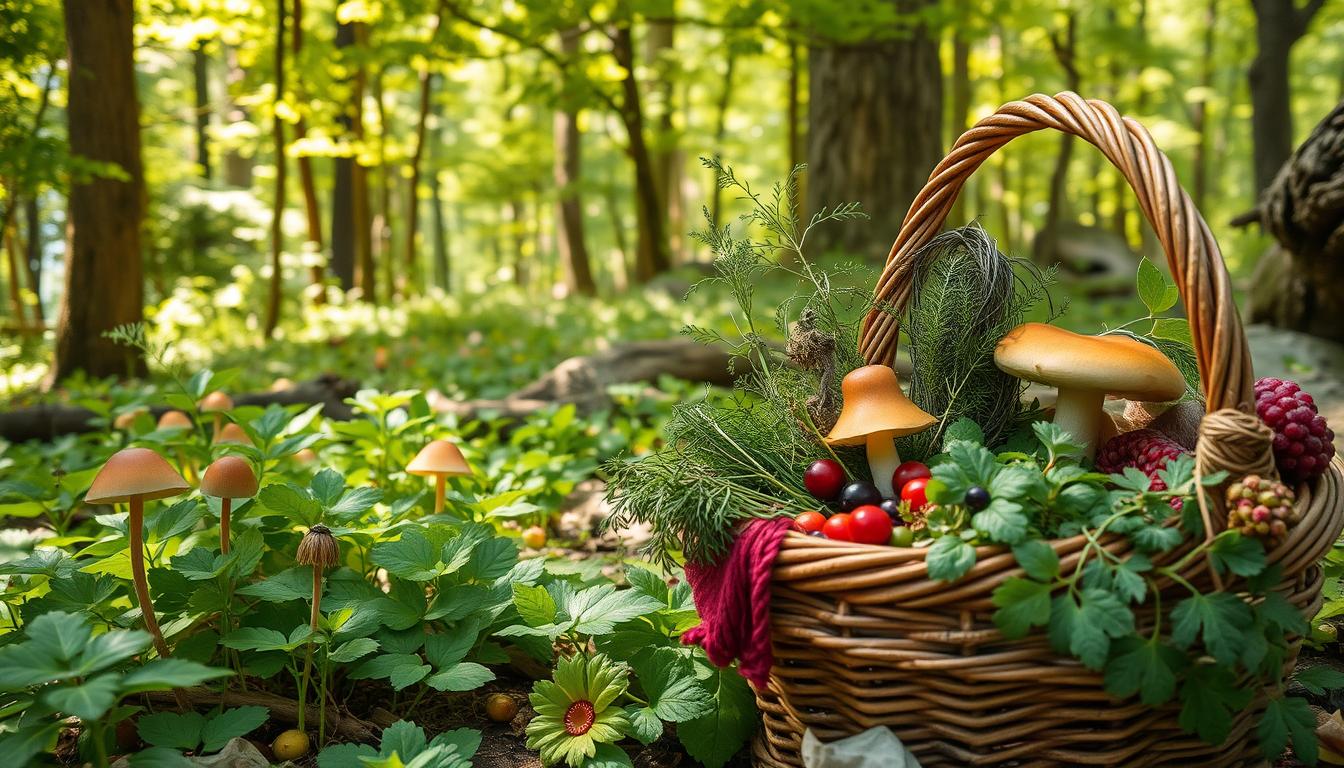Entering the world of foraging can be an exciting and enriching experience that reconnects you with nature and enhances your wilderness survival skills. This beginner’s guide is designed to introduce you to the foundational aspects of foraging for food in the wild, focusing on edible plants that are common and delicious.
Renowned foraging expert Ellen Zachos has identified 40 of the most accessible and delectable wild plants across North America in her detailed guide. These plants can be found in diverse regions, making them perfect for beginner foragers on their nature walks. In addition to her plant descriptions, Zachos emphasizes the importance of recognizing lookalikes and provides essential harvesting, processing, and cooking techniques.
When you embark on your foraging journey, remember the crucial practices of sustainability and ethical harvesting. This introduction will empower you with the knowledge to safely and respectfully forage for natural food, turning your hikes into fruitful adventures.
Key Takeaways
- Harvest only about 1/4 of any plant to ensure sustainable foraging.
- Focus on harvesting invasive species without limitation.
- Avoid critically over-harvested plants like ramps and white sage.
- Leave some fruits and berries for other foragers and animals.
- Take local wild plant guidebooks and learn from experienced foragers.
Understanding the Basics of Foraging
Foraging for food in the wild is an ancient practice that has gained renewed popularity among survivalists and outdoor enthusiasts. By learning foraging basics, you can connect with nature, discover tasty wild edibles, and enhance your outdoor survival skills. Let’s delve into what foraging entails and why it has become a cherished activity for many.
What is Foraging?
Foraging is the act of searching for and gathering plants, fungi, and other natural resources from the wild. It is a practice that dates back to our ancestors but has seen a resurgence as people seek sustainable and healthy food sources. Popular plants for foraging include elderflowers in late spring to early summer, blackberries, and sweet chestnuts in autumn. Be sure to be 100% certain of the identification of what you gather to avoid potential dangers.
Why Forage: Benefits and Rewards
Foraging offers numerous benefits and rewards. It is an excellent way to engage in physical activity and gain outdoor survival skills. The sense of accomplishment that comes from plant gathering and preparing foraged foods can be immensely satisfying. Nutritionally, wild greens often surpass cultivated vegetables; in California, wild mallow was found to contain 27% more calcium than whole milk. Foraging also provides fresh and organic wild foods like berries and greens right from nature’s pantry.
Essential Foraging Tools
To ensure a safe and successful foraging experience, having the right tools is crucial. Essential items include a reliable identification guide, proper clothing and footwear, and necessary foraging tools like a knife or scissors. Don’t forget to bring food and water, as you may spend several hours in the wild. Being well-prepared not only boosts your confidence but also enhances your outdoor survival skills.
Remember, responsible foraging involves respecting other foragers and the environment, ensuring you leave enough resources for wildlife. By following foraging basics and practicing sustainable habits, you can enjoy this rewarding hobby while preserving nature for future generations.
Identifying Edible Plants in the Wild
Embarking on a foraging adventure requires a keen understanding of plant identification to distinguish between edible wild plants and toxic plants. By honing your skills in identifying common plants and leveraging expert insights, you can ensure that your foraging experience is both safe and rewarding.

Common Edible Plants and Their Lookalikes
One key to foraging safety is recognizing common edible wild plants and their potentially hazardous lookalikes. For example, black walnuts, often found in late summer and early fall, are a bountiful resource in North America. Similarly, juniper berries and elderflowers can be excellent additions to your foraged finds. However, misidentifying these plants can be dangerous, so it’s crucial to be cautious.
- Black Walnuts: High in nutrition, but ensure you’re not picking butternuts, which can be mistaken for black walnuts.
- Juniper Berries: Edible and used in various culinary applications; however, certain varieties can be toxic.
- Elderflowers: Wonderful for making cordials and syrups, but avoid the toxic, lookalike elderberries unless properly prepared.
Visual and Sensory Identification Tips
Refining your visual and sensory identification skills is pivotal in distinguishing edible wild plants from toxic plants. Apps like PlantSnap can assist in the process, but learning basic botany and understanding regional flora can greatly enhance foraging safety.
“Knowing your environment and the specific species native to it ensures you gather only what’s safe and beneficial,” says Ellen Zachos, a renowned foraging expert.
Here are some visual and sensory tips to ensure foraging safety:
- Examine the Plant Structure: Look at leaves, stems, and flowers. Examples include:
- Blackberries: Hundreds of species are all edible, distinguished by their aggregate fruit.
- Mustard plants: Recognizable by their yellow flowers with four petals in a cross shape.
- Smell and Taste: Conduct the universal edibility test if unsure, starting with smelling the plant, and progressing to a small taste if no adverse reaction occurs.
- Check Local Guides: Consulting regional guides helps identify invasive species versus native plants, crucial for ecosystem respect.
- Observe the Environment: Emergent aquatic plants like cattail and aquatic arrowhead, often found in wetlands, offer edible roots rich in nutrients.
Incorporating these tips into your foraging practice not only helps you tap into nature’s bounty but also ensures you do so responsibly and safely.
###
Foraging for Food in the Wild: Best Practices
Embarking on your foraging journey requires more than just knowledge of edible plants. It demands a set of best practices to ensure safety, sustainability, and respect for the environment. Here we outline critical approaches to make your wild foraging adventure both rewarding and responsible.

Safety Measures and Precautions
Foraging safety protocols are vital for a successful and hazard-free experience. Accurate plant identification is crucial; misidentifying plants can lead to health risks. Carry reliable guides or learn from seasoned foraging experts like Darcy Williamson to improve your knowledge. Always be aware of your surroundings and prepare for various scenarios, including weather changes and encountering wildlife. Additionally, avoid foraging in areas where chemical contamination from herbicides or pesticides might be an issue, such as urban or farmland locations.
Ethical Foraging: Sustainability and Respect
Practicing ethical foraging ensures the sustainability of natural food sourcing. Always respect the land by seeking permission from landowners before harvesting. Sustainable harvesting practices include picking only what you need and leaving enough for the plant to thrive and reproduce. By avoiding the harvesting of endangered or rare plants, you contribute to the conservation of biodiversity. Consider specific harvesting ratios based on the abundance of local flora to ensure you do not damage the ecosystem. For example, ramps have been overharvested in the eastern US; responsible foragers follow guidelines to preserve these wild edibles.
Working with Foraging Experts and Guides
Learning from foraging experts like John Kallas can be extremely beneficial. Experts provide hands-on learning experiences, ensuring you follow best practices and avoid common pitfalls. Participating in guided foraging tours allows you to harness knowledge about local species, seasons, and ethical foraging techniques. A foraging journal can be a helpful tool to note various wild edible locations and track seasonal changes, further enhancing your foraging skills.
| Best Practice | Details |
|---|---|
| Accurate Plant Identification | Prevents health risks, essential for safe consumption |
| Seek Permission | Ensures legal foraging and respects landowners |
| Sustainable Harvesting | Only take what you need, preserve rare species |
| Learn from Experts | Gain practical advice and hands-on experience |
| Keep a Journal | Track locations and seasonal changes for better foraging |
Preparing and Cooking Foraged Foods
Once you have successfully foraged your wild plants, it’s time to bring them into your kitchen. Preparing and cooking foraged foods can be an exhilarating experience, offering unique flavors and nutritional benefits. Familiarizing yourself with simple recipes, understanding the importance of proper processing and storage, and being mindful of common mistakes are key steps to fully enjoy the fruits of your foraging adventures.
Simple Recipes for Beginners
Starting with easy recipes is crucial when you’re new to cooking foraged foods. For example, a wild mushroom risotto can be a delightful dish. Substitute 250g of bolete mushrooms for a 250g pack of sliced mushrooms. Similarly, a Mushroom and Spinach Lasagne recipe can be transformed with foraged ingredients—try using nettle tops instead of spinach and replace fresh lasagne sheets with kelp seaweed sheets. Remember to keep cooking methods simple and experiment with flavors to discover what works for you.
Processing and Storing Wild Foods
Properly processing and storing wild foods is essential to maximize their shelf life and preserve their nutritional value and flavors. For instance, pine needles are a great source of vitamin C and antioxidants, while pine nuts offer a significant amount of protein. Drying and freezing these ingredients can help you store them longer. Similarly, you might want to process insects like crickets into flour, which is 60% protein and can be used to make protein bars. Always ensure that wild foods are thoroughly cleaned and correctly prepared to avoid any adverse effects.
Common Mistakes to Avoid
When foraging and cooking wild foods, make sure you are well-informed to avoid common foraging mistakes. One key mistake is not properly identifying plants and mushrooms, which can lead to accidental poisoning. Between 2016-2018, 8.6% of those who sought medical attention for accidental consumption of poisonous mushrooms had a “serious adverse outcome.” Always double-check plant identification and consult guides or experts. Additionally, be mindful of proportions; for example, use 4 wild garlic bulbs as a substitute for 1 crushed garlic clove. Finally, remember that experimentation is your friend, but safety should always come first.
FAQ
What is foraging?
Foraging is the practice of searching for and gathering wild foods such as plants, berries, and mushrooms from natural environments like forests, meadows, and even urban areas. It involves recognizing and harvesting edible, safe-to-eat wild greens, fruits, and other natural food sources.
Why should I consider foraging for food in the wild?
Foraging offers numerous benefits: fresh, organic food access, physical exercise, a deeper connection to nature, and the joy of discovering and identifying edible plants. It’s a sustainable practice promoting outdoor survival skills while enriching your diet with nutritious, naturally sourced ingredients.
What are some essential foraging tools?
Essential tools for a safe and effective foraging experience include a sharp knife or shears, a basket or mesh bag for collecting plants, field guides for plant identification, gloves, and a journal for notes. It’s crucial to have the right gear to ensure you harvest and store plants properly.
How can I identify common edible plants and their lookalikes?
Learning to identify edible plants involves studying their visual characteristics such as leaves, flowers, and berries, as well as noting their scent and texture. Foraging experts like Ellen Zachos provide detailed descriptions and comparisons to help differentiate between safe edibles and potentially toxic lookalikes.
What are some visual and sensory tips for identifying plants?
Visual and sensory identification involves observing plant shapes, colors, textures, and smells. For example, black walnuts can be recognized by their corrugated shells, and juniper berries by their blue, cone-like appearance. Sensory cues such as scent and texture are also vital for accurate identification.
What safety measures and precautions should I take when foraging?
Prioritize safety by thoroughly researching plant identification, using field guides, always confirming plants with multiple sources, and avoiding areas exposed to pollution or pesticides. Respect private properties and local regulations. Knowledge about toxic plants and their habitats is crucial to avoid accidental poisoning.
What does ethical foraging entail?
Ethical foraging involves sustainable harvesting methods, such as taking only what you need and leaving enough for the ecosystem to thrive. It includes obtaining necessary permissions from landowners, minimizing environmental impact, and respecting the natural habitats and life cycles of the plants.
How can foraging experts and guides help in my journey?
Foraging experts like Darcy Williamson and John Kallas offer invaluable advice, practical tips, and hands-on learning experiences. Their knowledge can guide you in identifying edible plants, understanding proper harvesting techniques, and integrating wild foods into your diet safely and sustainably.
What are some simple recipes for beginners using foraged foods?
Beginners can start with straightforward recipes like wild green salads, nettle soup, or elderflower cordial. These recipes do not require extensive cooking skills and can showcase the unique flavors of wild edibles, as you gradually expand your culinary repertoire with foraged ingredients.
How should I process and store wild foods after foraging?
After harvesting, clean plants thoroughly to remove dirt and insects. Depending on the plant type, drying, freezing, or pickling can preserve wild foods. Proper storage methods help maintain flavor and nutritional value, ensuring your foraged goods last longer and remain safe to eat.
What are common mistakes to avoid when foraging?
Common mistakes include misidentifying plants, overharvesting, ignoring local laws, and foraging in polluted areas. Avoid these pitfalls by educating yourself, practicing responsible harvesting, and continually learning from reputable foraging resources to improve your skills and safety.
Source Links
- https://misswondersmith.com/blog/2019/introtoforaging
- https://www.backpacker.com/skills/foraging/
- https://www.bbcgoodfood.com/howto/guide/foraging
- https://www.healthline.com/nutrition/foraging-for-food
- https://www.plantsnap.com/blog/the-foragers-guide-to-plant-identification/
- https://www.popsci.com/find-wild-edible-plants/
- https://rootkitchens.substack.com/p/foraging-best-practices
- https://mountainhouse.com/blogs/emergency-prep-survival/foraging-for-food-guide?srsltid=AfmBOoor8aJg2Y7Cgp1cBU0-njgNjwh6basoESJDeF0V3ZP2ZHJYuqQ8
- https://gallowaywildfoods.com/recipes/
- https://thesurvivalmom.com/how-to-forage/
- https://totallywilduk.co.uk/2017/12/18/cooking-wild-food/

